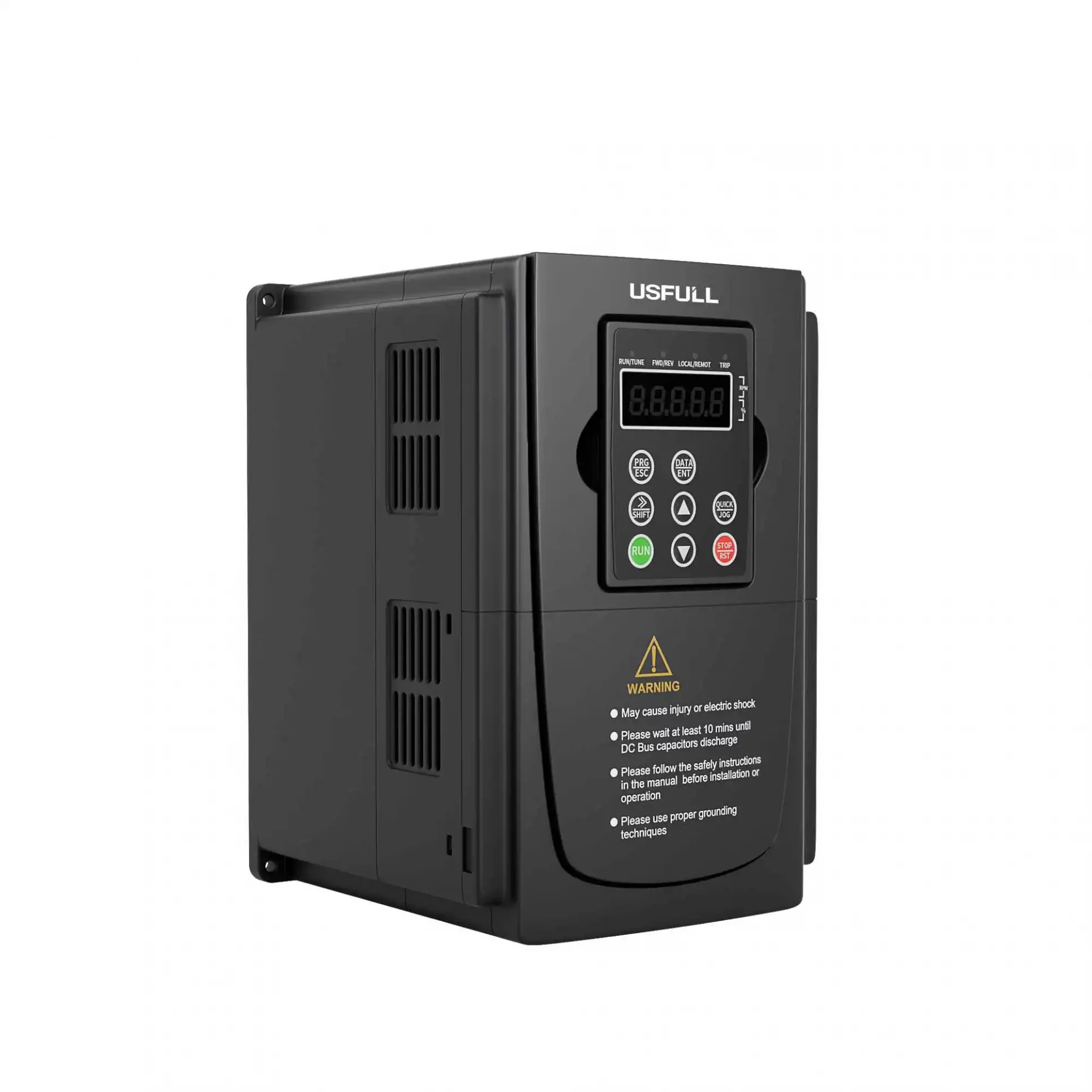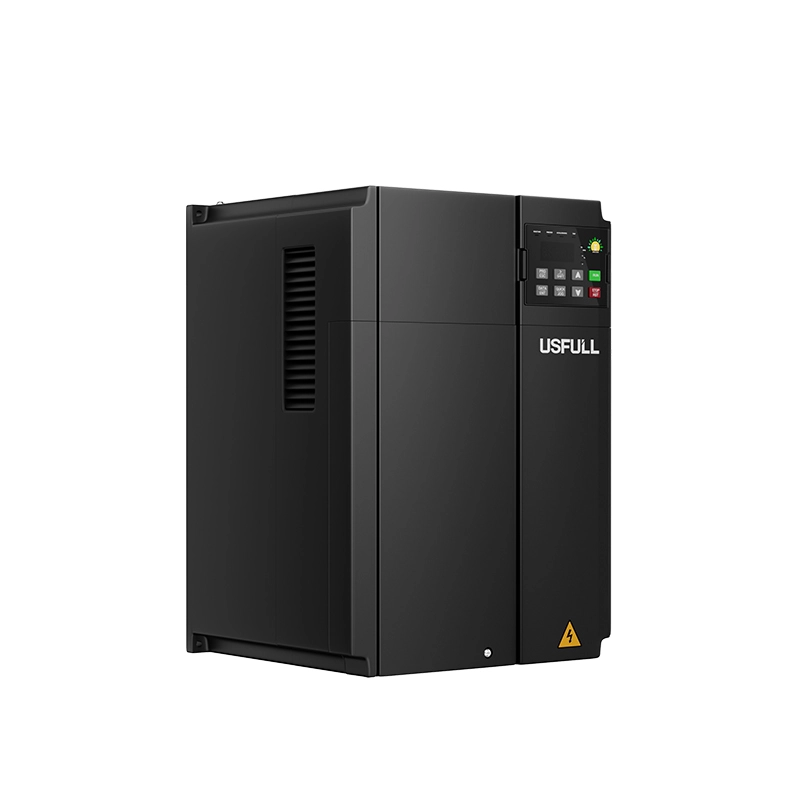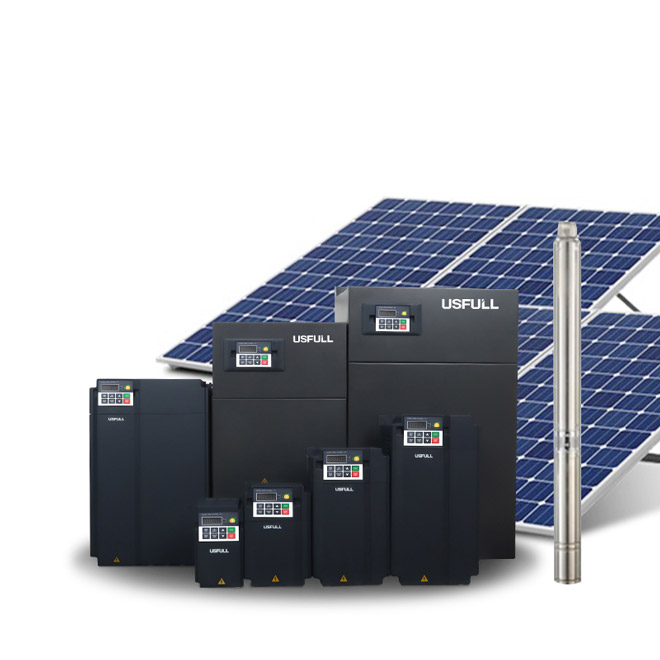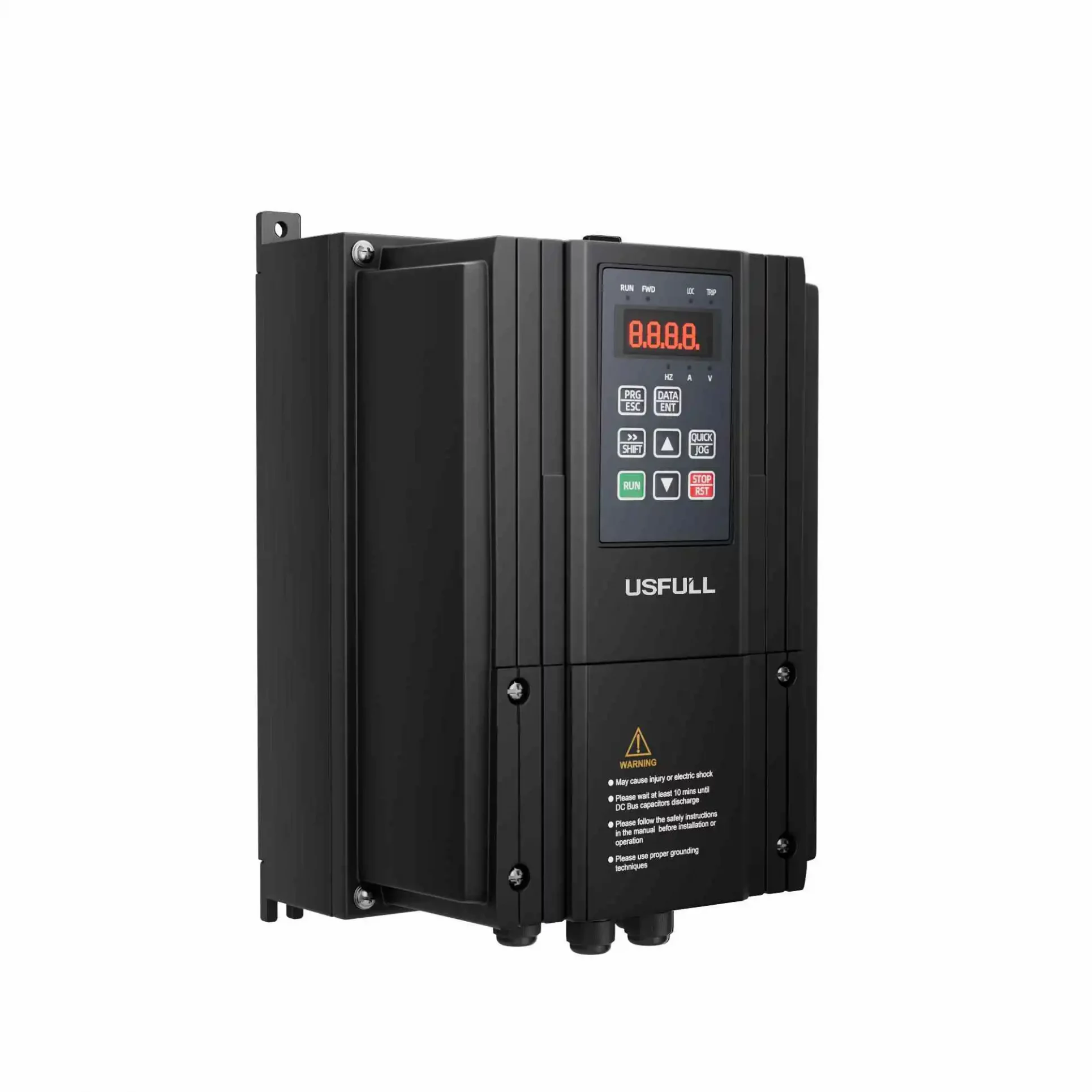1. Frequenzumrichter V/F-Steuerungsmodus
Bei der Spannungs-Frequenz-Regelung (V/F) wird ein konstantes Verhältnis zwischen Spannung (V) und Frequenz (F) aufrechterhalten. Mit anderen Worten: Die Amplitude der Ausgangsspannung ist direkt proportional zur Ausgangsfrequenz.
Der Begriff "V" steht für die Amplitude der Spannung, die von der Frequenzumrichter, während "F" die Frequenz des des Frequenzumrichters Ausgangsspannung. Folglich führt eine Erhöhung der Ausgangsfrequenz zu einem entsprechenden Anstieg der Amplitude der Ausgangsspannung, wodurch ein proportionales Verhältnis aufrechterhalten wird. Das Schlüsselprinzip besteht darin, einen konstanten magnetischen Fluss aufrechtzuerhalten, indem das U/F-Verhältnis beibehalten wird.
Die U/f-Steuerung wird häufig in Motorsteuerungsszenarien eingesetzt, um einen konstanten Motorfluss zu gewährleisten. Dieser Modus bietet Attribute wie günstige Kosteneffizienz und gleichmäßiges Ausgangsdrehmoment, wobei die Regelung des konstanten magnetischen Flusses im Vordergrund steht. Die Präzision der Drehzahlregelung ist jedoch weniger ausgeprägt. Sie eignet sich für Anwendungen, bei denen die Ziele der Energieeinsparung moderat sind und keine strengen Anforderungen an die Drehzahlgenauigkeit bestehen. Vor allem bei niedrigen Drehzahlen kann es zu einem unzureichenden Drehmoment kommen, so dass eine Drehmomentkompensation erforderlich ist.
Der V/F-Regelungsmodus eignet sich für Lasten mit variablen und konstanten Drehmomentanforderungen, wie z. B. Lüfter, Wasserpumpen und Förderbänder.
.webp)
2. Frequenzumrichter-Schlupffrequenzregelung (U/F-Regelung)
Aufgrund der inhärenten Drehzahlunterschiede (∆n) bei Motoren, die proportionalen Drehmomentschwankungen (T) entsprechen, ist die Einstellung der des Frequenzumrichters Ausgangsfrequenz ändert sich der Schlupf (∆n) und folglich auch die des Frequenzumrichters Ausgangsdrehmoment (T) und Drehzahl. Dieses Prinzip, das als Schlupffrequenzregelung bekannt ist, manipuliert das Motordrehmoment durch Regulierung des Schlupfes und steuert so effektiv die Motordrehzahl.
Um diese Regelungsziele zu erreichen, ist eine Regelungsstrategie unabdingbar, die eine Frequenzumrichter ausgestattet mit einer Rückkopplungseingangsklemme. Eine Schlupffrequenzregelung Frequenzumrichter integriert eine Vergleichsschaltung und einen Proportional-Integral-Derivative (PID)-Regelkreis zur Verarbeitung von Soll- und Istwerten. Dies ermöglicht eine fein abgestimmte Regelgeschwindigkeit und eine schnelle Reaktion. Es gibt zwei Methoden: Bei der einen wird ein Drehzahlsensor verwendet, um die Motordrehzahl als Rückmeldung für eine höhere Präzision zu nutzen, bei der anderen werden indirekte Parameter (z. B. Druck, Durchfluss, Temperatur) in Rückmeldesignale umgewandelt, um die Genauigkeit zu erhöhen.
In diesem geschlossenen Kreislauf stellt der Wechselrichter einen Sollwert auf und vergleicht ihn mit dem Rückführungswert. Ist der Rückführungswert kleiner als der Sollwert, wird der Frequenzumrichter gibt ein Frequenzerhöhungssignal aus, das sowohl den Schlupf (∆n) als auch das Drehmoment proportional erhöht und damit die Motordrehzahl steigert. Umgekehrt führt ein Signal zur Frequenzverringerung zu einer Verringerung des Schlupfes (∆n) und damit des Drehmoments, was zu einer Verringerung der Motordrehzahl führt, die mit dem vorgegebenen Ziel übereinstimmt.
Zur Unterscheidung von der U/f-Regelung erfordert die Schlupffrequenzregelung die Einrichtung einer PID-Funktion innerhalb der Frequenzumrichter und erfordert eine Rückkopplungsklemme. Für die Regelung mit U/F-Techniken (Voltage-to-Frequency) sind externe PID-Regelkarten erforderlich.
3. Frequenzumrichter-Vektorsteuerung
Die Vektorregelung ist eine Regelungsmethodik, die Gleichstrommotoren durch die des Frequenzumrichters interne elektronische Schaltungen zur Steuerung von Wechselstrommotoren.
1. Das Steuersignal teilt sich in eine Erreger- und eine Ankerkomponente auf und spiegelt damit die Steuerungsverfahren für Gleichstrommotoren wider.
2. Das Steuersignal wird in ein dreiphasiges AC-Steuersignal umgewandelt, das auf die Anforderungen der dreiphasigen AC-Motorsteuerung zugeschnitten ist und die des Frequenzumrichters Ausgangswandlerschaltung.
Bei der Vektorregelung gibt es zwei Ansätze: sensorlos (mit interner Umrichterrückführung) und sensorgestützt (mit externer Rückführung). Beide Methoden regeln direkt die Motordrehzahl (oder das Drehmoment), können aber keine anderen Variablen wie Druck, Durchfluss oder Temperatur steuern.
Diese Technik gewährleistet eine präzise Drehzahl- und Drehmomentsteuerung bei gleichzeitiger Beeinflussung von Stromamplitude und -phase. Darüber hinaus verfügt die Vektorsteuerung über softwarekonfigurierbare Eigenschaften, einschließlich der Selbstabtastung für die Einbeziehung der Motorparameter in die Frequenzumrichter, die Eins-zu-Eins-Kopplung von Motor und Frequenzumrichter und die umfassende Strommanipulation.
4. Frequenzumrichter Direkte Drehmomentsteuerung
Die direkte Drehmomentregelung (Direct Torque Control, DTC) ist nach der Vektorregelung eine weitere fortschrittliche Technologie zur Drehzahlregelung von Wechselstrommotoren. Diese Methode nutzt die Raumvektor- und Statorfeldorientierungsanalyse zur mathematischen Modellierung von Asynchronmotoren innerhalb des Stator-Koordinatensystems. Sie berechnet und regelt die Flussverknüpfung und das Drehmoment des Motors und begrenzt die Drehmomentschwankungen innerhalb eines bestimmten Schlupfbereichs durch einen diskreten Zweipunktregler (Band-Band-Regelung). Dies wird durch den Vergleich der Drehmomenterfassung mit vordefinierten Werten erreicht. Der Schlupf wird über eine Frequenzanpassung und Pulsweitenmodulation (PWM) geregelt und beeinflusst Frequenzumrichter Schaltzustände und eine leistungsstarke Drehmomentabgabe.
DTC ist außerdem auf ein Eins-zu-Eins-Verhältnis zwischen Motor und Frequenzumrichter beschränkt, was es für Prozesssteuerungsanwendungen ungeeignet macht.
Zu den bemerkenswerten Eigenschaften gehören die Möglichkeit der Steuerung ab Drehzahl Null, ein breiter Drehzahlbereich, eine präzise Drehmomentsteuerung, eine schnelle Systemreaktion und eine hohe Regelgenauigkeit.
Die Vektorregelung eignet sich gut für drehmomentintensive Aufgaben mit konstantem Drehmoment auch bei 0 Hz, wie z. B. Papierherstellung, Stahlwalzen, Werkzeugmaschinen und Hebevorgänge. In der Zwischenzeit erweist sich die Drehmomentsteuerung als effektiv für Anwendungen wie Papierherstellungs- und Färbemaschinen, die eine konstante Spannung beim Auf- und Abwickeln von Folien oder Drähten durch präzise Steuerung von Drehmoment und Geschwindigkeit aufrechterhalten.




